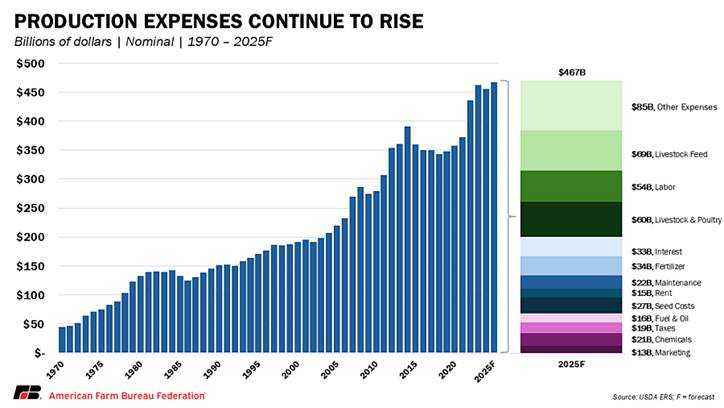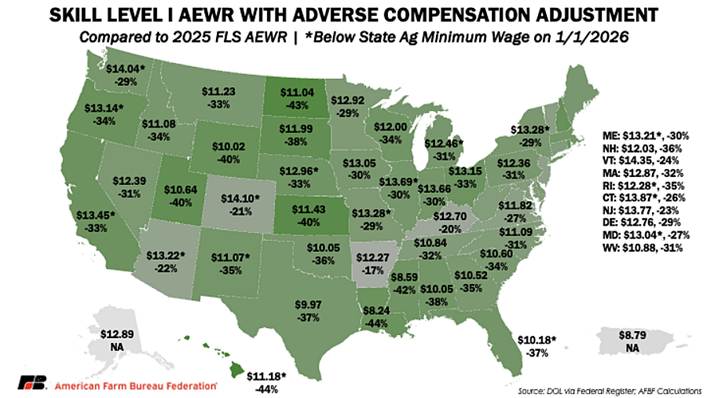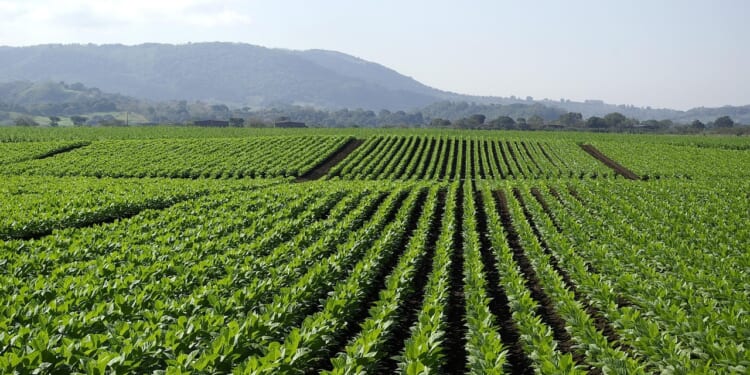North Carolina’s farmers just got some long-awaited good news. The U.S. Department of Labor’s new interim final rule (IFR) for setting H-2A Adverse Effect Wage Rates (AEWRs) marks a significant step toward fairness and predictability in how wages for agricultural guestworkers are determined. For North Carolina, a state that ranks among the top users of the H-2A program, particularly in tobacco, sweet potatoes, and Christmas tree production, this rule could bring substantial cost savings and stability to one of the state’s most important industries. This is pertinent in a time where input costs are exceedingly high for farmers.

For years, as discussed in my recent report on farm labor, North Carolina farmers have struggled under a wage-setting system that often exaggerated labor costs due to data quirks in the old Farm Labor Survey (FLS). That survey frequently lumped in wages from states with agricultural overtime laws or with higher-cost regions, thereby inflating the wages required of North Carolina employers. The new rule instead bases wages on the Occupational Employment and Wage Statistics (OEWS) dataset, which is a broader, more stable measure that relies on real-world employment data rather than just farm-specific sampling.
Crucially, the new rule establishes two skill levels for farm work rather than a one-size-fits-all rate. Skill Level II (Experienced Workers) covers jobs that require some prior experience, certifications, or technical knowledge, and where workers operate with less supervision. Skill Level I (Entry-Level) applies to the majority of H-2A positions. These are jobs that require little or no prior experience and only limited training on the job. Most H-2A positions in North Carolina will qualify as Skill Level I, based on entry-level wages at the 17th percentile of the OEWS data. This means wages will more accurately reflect market conditions rather than artificially high averages. It’s a sensible recognition that planting, harvesting, and sorting crops shouldn’t be priced the same as jobs requiring specialized equipment operation or technical certifications.
Beyond wages, the rule also addresses one of the most frustrating burdens for North Carolina growers: the requirement to provide free housing to all H-2A workers, even when domestic workers performing the same jobs have to cover their own living costs. The new “adverse compensation adjustment” finally accounts for that nonwage benefit by allowing a housing offset tied to fair market rental values. This change acknowledges that H-2A workers already receive significant in-kind compensation. Under Skill Level I with adverse compensation, North Carolina’s AEWR comes out to around $11.09 depending on the area, significantly less than $16.16 in 2025.

The Department of Labor estimates that the rule could save farmers nationwide an average of $2.4 billion per year over the next decade. For North Carolina, where rising labor costs and regulatory uncertainty have put smaller farms under strain, this is a lifeline. The savings can help farms reinvest in modern equipment, expand their operations, or improve worker housing while keeping their products competitive in national and global markets.
It’s also important to remember that lower H-2A costs don’t just help foreign guestworkers or farm owners, they protect the entire agricultural supply chain. When farms close due to unmanageable labor expenses, everyone from local equipment dealers to food processors and rural communities suffers. By easing the wage pressure, the new rule helps stabilize North Carolina’s agricultural employment base and preserves opportunities for domestic workers in related industries.
While questions remain about how the Department of Labor will integrate direct farm employers into future OEWS surveys, this rule is a clear step in the right direction. It modernizes a decades-old wage system, gives farmers the breathing room they need, and acknowledges that federal policy should not punish efficiency or competitiveness.
North Carolina’s farmers have long asked for reforms that make the H-2A program more workable and predictable. With this rule, Washington shows it is finally listening, and farmers can feel a little bit of relief.










